Whyte Family Crests. Which Whyte is your family?
You searched for 'Whyte', but there are 7 families with that name in our historic records. Do you know where your family came from, recognise the name of an ancestor or see your crest? If so, please click on your family from the list below..
SELECT YOUR CREST TO SEE AVAILABLE SILVER
AND REGISTER FOR SALE ALERTS
-
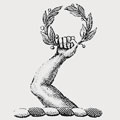 Whyte
Whyte
Grongar, Ayrshire, and Arddarroch, Dumbartonshire
"Virtute"
Select
-
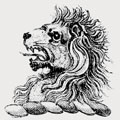 Whyte
Whyte
Select
-
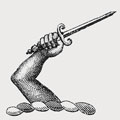 Whyte
Whyte
Newtown Manor, Ireland
"Fortiter sed féliciter"
Select
-
 Whyte
Whyte
Stockbriggs, Lanarkshire
"Fortuna favet"
Select
-
 Whyte
Whyte
Loughbrickland, co. Down
"Echel Coryg"
Select
-
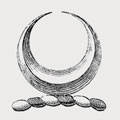 Whyte-Melville
Whyte-Melville
Bennochy and Strathkinness, Fife, Scotland:
"Virtute parta"
"Denique coelum"
Select
-
 Whyte-Melville
Whyte-Melville
Bennochy and Strathkinness, Fife, Scotland:
"Virtute parta"
"Denique coelum"
Select
Whyte
Whytt or Whyte Family History
I will deal firstly with the Scottish family of Whytt or Whyte and subsequently Whyte-Melville before moving to the Irish Whytes.
William Anderson’s 1863 “The Scottish Nation” gives the following description of the Whyte family history:
“WHYTE-MELVILLE, the name of an old family in Fifeshire, proprietors of the estate of Bennochy, parish of Kirkcaldy.
Matthew Whyte of Maw, living temp. James III. and James IV., had a charter under the great seal, dated June 22, 1492, “terrarum de Kilmaron.”
John Whyte, younger son of David Whyte of Maw, had a son, also named John Whyte, a merchant in Kirkcaldy, whose son, Robert Whyte, also a merchant in Kirkcaldy, and the first provost of that royal burgh, purchased Bennochy. Robert’s son, John Whyte, Esq. of Bennochy, married, for his first wife, Jane, daughter of Thomas Melville, Esq. of Murdocainry, and died in 1695.
His elder son, Robert Whyte, Esq. of Bennochy, advocate, died in 1714, having had 2 sons, George and Robert, and 2 daughters, Jean, married to Ramsay of Balmain, and Helen, wife of Andrew Melville, Esq., of the family of Carnbee, and the mother of General Robert Melville of Strathkinnes.
The elder son, George Whyte, Esq. of Bennochy, died in 1728.
He was succeeded by his brother, Robert Whyte, of Bennochy, M.D., an eminent physician, born at Edinburgh, September 6, 1714, six months after his father’s death. He studied at the university of St. Andrews, and having taken his degree of M.A., commenced the study of medicine at Edinburgh, and completed it at London, Paris, and Leyden. In 1736 he had the degree of doctor of medicine conferred on him by the university of Rheims, and also received the same honour, on his return, from the university of St. Andrews. In 1737 he was admitted a licentiate of medicine by the Royal College of physicians in Edinburgh, when he settled in practice in that city, and the year following he became a fellow of the same college. In 1747 he was appointed professor of the Institutes of Medicine in the university of Edinburgh. In 1752 he was elected fellow of the Royal Society of London; in 1761 he was nominated first physician to the king in Scotland, an office which was created for him; and in 1764 was chosen president of the Royal College of physicians at Edinburgh. Dr. Whyte died of a complication of chronical ailments, April 15, 1766. He was twice married. His first wife was sister of General Robertson, governor of New York. By her he had two children, both of whom died in infancy. His 2d wife was sister of James Balfour, Esq. of Pilrig, and by her, who died in 1764, he had 14 children, six of whom only survived him, three sons and three daughters. – His works are: An Essay on the Vital and other involuntary Motions of Animals. Edin. 1751, 8vo. – An Essay on the Virtues of Lime-water and Soup in the Cure of Stone. Edin. 1752, 12mo. – Physiological Essays on the Causes which promote the circulation of the Fluids in the very small vessels of Animals. On the Sensibility and Irritability of the Parts of Men and other Animals; occasioned by Dr. Haller’s Treatise on these Subjects. Edin. 1755, 12mo. – Observations on the Nature, Causes, and Cure of Nervous, Hypochondriac, or Hysteric Disorders; to which are prefixed some Remarks on the Sympathy of the Nerves. Edin. 1765, 8vo. – Observations on the Dropsy of the Brain. Edin. 1768. This work did not appear till two years after his death, when all his other works were collected and published in one volume, 4to, under the direction of his son and his intimate friend, Sir John Pringle. – Besides the works mentioned, he wrote many valuable papers, particularly in the Philosophical Transactions, the Medical Essays, the Medical Observations, and the Physical and Literary Essays.
Dr. Whyte’s eldest son, Robert Whyte, Esq. of Bennochy, died at Naples, unmarried, soon after his father. He was succeeded by his brother, John Whyte Melville, Esq. of Bennochy and Strathkinnes, born Feb. 27, 1755. Mr. Whyte Melville married in 1781, Elizabeth, youngest daughter of Archibald M’Gilchrist, Esq. of North Bar, Renfrewshire, and had 2 sons, Robert and John, and 4 daughters. He died in May, 1813.
His eldest son, Robert Whyte Melville, Esq. of Bennochy and Strathkinnes, born Aug. 12, 1794, died, unmarried, Feb. 26, 1818.
He was succeeded by his brother, John Whyte Melville, Esq. of Bennochy and Strathkinnes, born in 1797; educated at Eton, and Trinity college, Cambridge; formerly in the 12th Lancers, and afterwards major in the Royal Fifeshire yeomanry cavalry; a magistrate and deputy-lieutenant for Fifeshire; married in 1819 Lady Catharine Anne Sarah Osborne, youngest daughter of the 5th duke of Leeds; issue, with 2 daughters, a son, George John, born in 1821, at one time lieutenant and captain Coldstream guards, married Charlotte, daughter of first Lord Bateman.”
Burkes Landed Gentry 1879 states that the Whytes of Scotland were “free barons in Fife, co. Perth and other cos. of North Britain”. Incidentally, until the end of the 19th century Scotland was often referred to as North Britain; presumably a linguistic attempt to foster a feeling of national unity in response to the Jacobite rebellions of 1715 and 1745. Burkes also states that John Whyte (son of David Whyte and Euphraim, daughter of Michael Balfour of Burleigh) acquired considerable wealth as a merchant in Kirkaldy and it was his son Robert who acquired the Bennorchy estate.
John Whyte- Melville (1797-1883) of Bennorchy and Strathkinness was famously painted by his friend Sir Francis Grant, President of the Royal Academy, playing golf at the Royal and Ancient, where Whyte-Melville was known as the “father of the club” having been a member for 67 years and twice elected Captain. Asides from the son mentioned above he had two daughters; Catherine who married Sir David Dundas Bart of Dunira, co. Perth and Elizabeth who married James Wolfe Murray Esq. Of Cringletie, co. Peebles (see that family). In addition to his father’s estate at Bennorchy he also inherited the Strathkinness estate from his cousin General Robert Melville in 1809, in addition taking his name and arms.
The son, George John Whyte-Melville achieved renown as a sporting writer and poet and his portrait hangs in the National Portrait Gallery. He also features in a Vanity Fair Cartoon of 1871 by James Tissot as “The novelist of society”. A fearless follower of hounds he died galloping over a ploughed field when out with the Vale of the White Horse and the hunting song “John Peel” was written by his old friend John Woodcock Graves at his funeral in tribute. He left one daughter, Florence, who married the 11th Viscount Massereene in 1870.
http://en.wikipedia.org/wiki/File:George_Whyte-Melville_Vanity_Fair_23_September_1871.jpg
Spelling was not standardised until the middle of the 19th century and over the centuries the name has been spelt “Whytt” as well as “Whyte” although always pronounced “white”
The eminent physician Dr Robert Whyte of Bennorchy commissioned a bookplate in the Chippendale style circa 1760 and Anthony Pincott of the Bookplate Society (www.bookplatesociety.org) notes that on some copies of this bookplate the final “t” has been changed by hand to “e” and that in a later engraving it was changed to “e” properly.
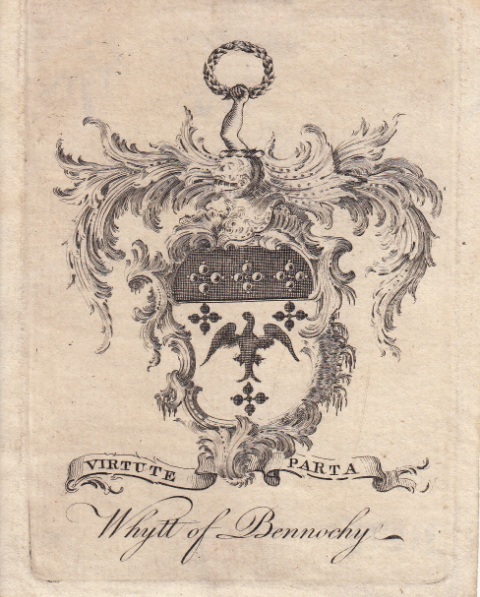
SNBM